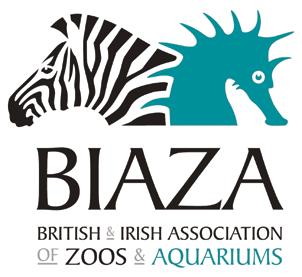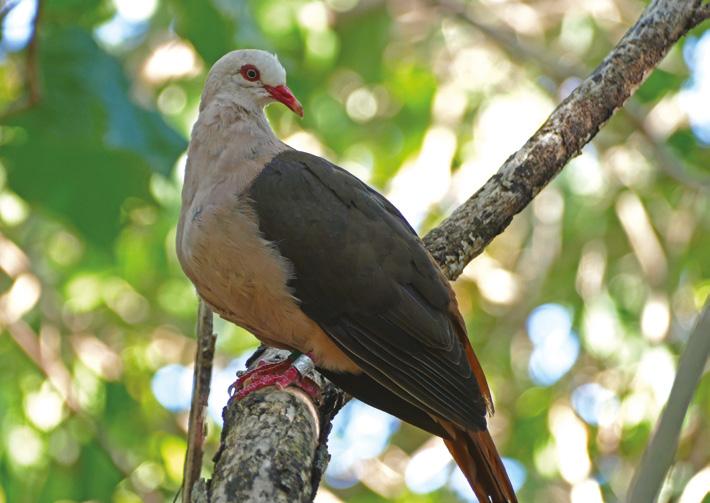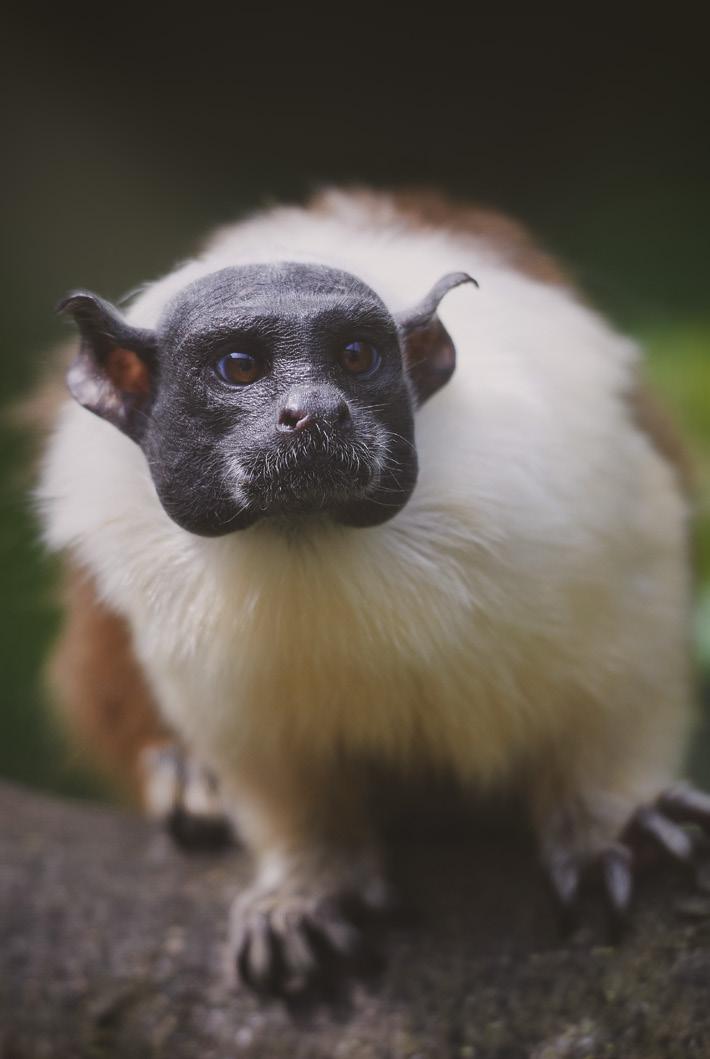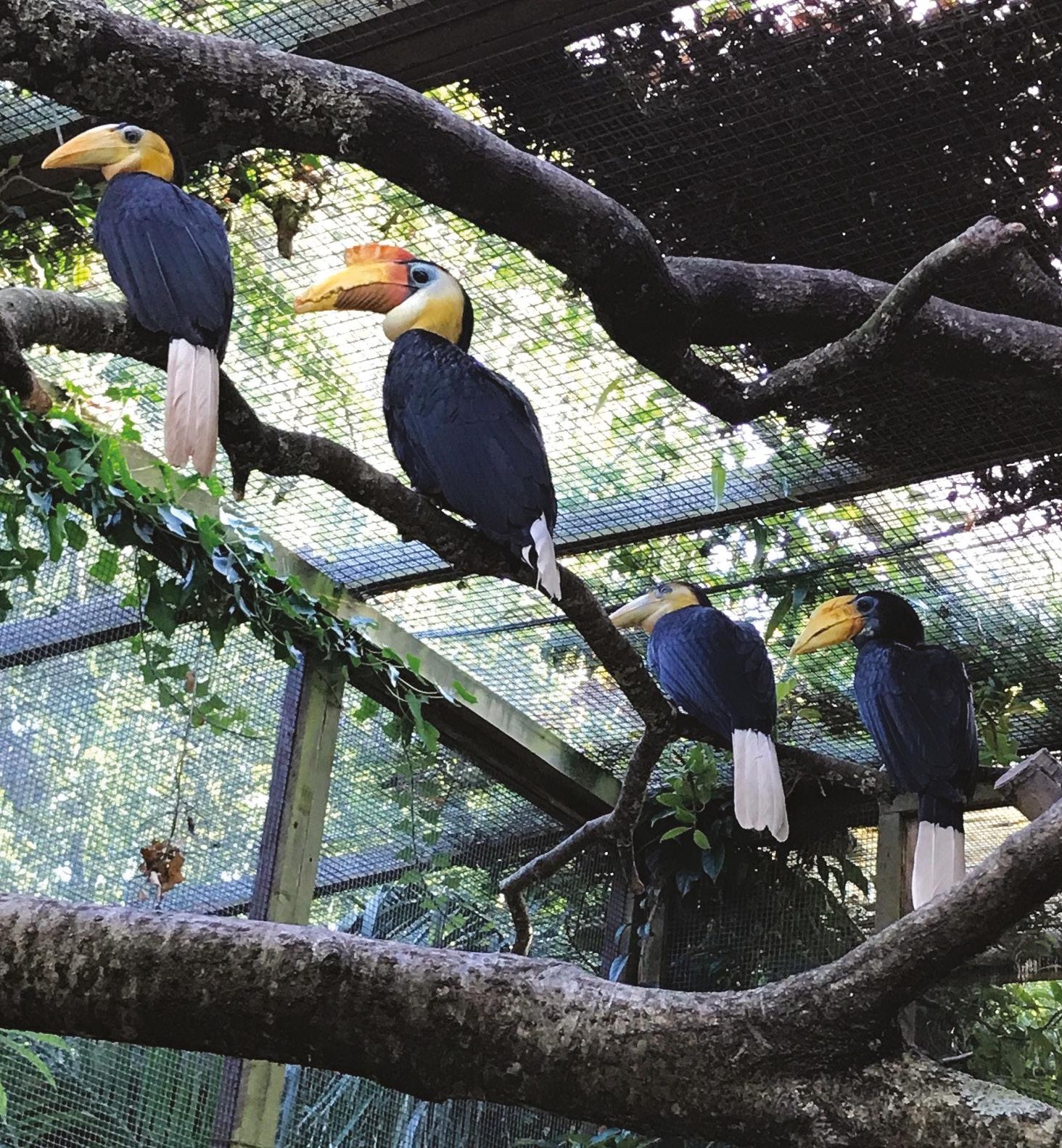
3 minute read
At the Zoo
At the Zoo
YOUNG LOVE FOR RAYMI
Advertisement
In July, our 3-year-old Andean bear, Raymi, left Jersey for his new home at Givskud Zoo in Denmark. Soon after arriving, he was paired with a young female called Nazca. Since then, they have been playing together with Nazca already showing that she is in charge, despite being half Raymi’s size. In time we hope the pair will make a vital contribution to the breeding programme for the species. Raymi has been an adored member of Jersey Zoo’s bear family, whose playful and mischievous behaviour has been enjoyed by both staff and visitors alike. The keepers were sad to see him leave but excited for him to start this new chapter of his life.

SUCCESS AT NATIONAL AWARDS CEREMONY
We were delighted to receive a total of seven awards at the annual conference of the British & Irish Association of Zoos and Aquariums (BIAZA) earlier this year. These awards recognise our efforts from across the organisation at Jersey Zoo and in the field. We received gold awards for our work with the Pygmy Hog Conservation Programme and for the research highlighting the impact of the illegal wildlife trade on the ploughshare tortoise. The zoo received a gold award for the expansion of the fruit bat enclosure to enable continuous flight and a bronze award for the research to understand sources of stress in pied tamarins. We also received a silver award for the zoo’s popular summer event Durrell At Dusk. Two gold prizes were awarded for developing husbandry techniques for the giant jumping rat and the mountain chicken frog to prevent its extinction in the wild.

UNDERSTANDING OUR PIED TAMARINS
Pied tamarins are sensitive animals and develop health problems more than other related monkeys in captivity. Maintaining the highest standards of welfare is a top priority, so we worked on a collaborative study to better understand the causes of stress in the tamarins. We measured cortisol, which is the stress hormone, and found that females had higher cortisol levels than males, while hand-reared tamarins had higher levels than parentreared monkeys. Unexpectedly, tamarins living in off-show enclosures had more elevated cortisol than those living in the areas that can be seen by our visitors. This might be because there are more pied tamarins in the off-show buildings. The quieter, well-vegetated public exhibits may give the monkeys enough security to feel relaxed even when they are being watched.
ENDANGERED PIGEONS RETURN HOME
Three pink pigeons bred at Jersey Zoo have been returned to their native island of Mauritius. Here they joined the in-country captive breeding programme to return missing genes to the wild population.

Monitoring genetic diversity is an integral part of conserving wildlife. A higher genetic variability helps maintain the health of a population, provides better protection against disease and pests, and makes a species more adaptable to environmental changes. The returned birds are descendants of individuals brought to the zoo by Gerald Durrell in the 1970s. It was around this time that pink pigeons were considered to be one of the rarest birds in the world, with just ten individuals thought to remain in the wild. Although the wild population is currently stable, the species is still faced with the threat of invasive predators and a deteriorating habitat.

HORNBILL BREEDING SUCCESS
Earlier this summer, we were delighted that a pair of Sunda wrinkled hornbills successfully hatched two chicks. This is the first time in our history that these endangered birds have successfully bred at the zoo. Wrinkled hornbills usually remain paired for life. The female will seal herself in the nest, leaving just a small hole for the male to pass food through. The mother and chicks rely solely on the male to feed them during this nesting period. Our handsome male, Samson, proved himself to be a model father and did a fantastic job providing for his family. Eventually, 15 weeks after concealing herself in the nest box, the mother emerged with her two chicks. Samson watched and encouraged them as they removed the mud seal from around the nest entrance, tempting them out with morsels of food and squeaking noises.











